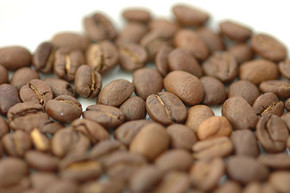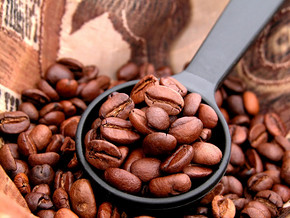What is Geisha Rose Summer Coffee?
Follow the caf é (Wechat official account vdailycom) and found that Beautiful Cafe opened a small shop of its own.
What is Geisha?
Geisha is a high-priced coffee, often reminiscent of Panamanian coffee. In fact, Geisha was discovered in the rose summer forests of Ethiopia in 1931 and has only been cultivated since the 1960s. The Geisha tree is taller, and its beautiful, slender leaves are easy to tell. The quality of Geisha growing at high altitude will be greatly improved.
Esmeralda Geisha has even sweetness, clear and pure flavor, with cherry, citrus, mango, papaya, peach, pineapple, guava and other fruit aromas and a variety of flowers. Some taste like citrus oil, orange peel or Earl Grey Tea. Others contain unique flavors of marshmallows and vanilla.

Why has Geisha become so popular recently?
After Geisha won the crown, BOP began to get a lot of attention. BOP is a coffee cup test competition founded by the Panamanian boutique coffee association in 1997. The coffee beans that won the first place in this competition will sell at a high price. Since then, Geisha has been very popular and made waves in the coffee industry.
Geisha is the standard of baristas competition.
It is often heard that baristas use Geisha to participate in the competition to achieve success, so after the competition, some coffee producers also received widespread attention. I believe that Geisha is a wonderful experience and will never let people down. Due to the good reputation of Geisha, it is undoubtedly an advantage to use it to participate in the competition, and many competition judges also prefer Geisha.
Today, the question before the game is no longer "who can use Geisha?" It's "who doesn't use Geisha?" I admit that Geisha will be used in many competitions, but in the past five years, no WBC champion has used it to compete. They all used specific varieties of coffee beans carefully selected by themselves and their team. This is not to say that these coffee beans are rare or special. Sasa Sestic, the 2015 WBC champion, used the Sudan Rume varietal, a legendary coffee bean that made him stand out. So I think for baristas, knowledge and love of coffee are the most important.
The reason why Geisha didn't show up in the cafe
Although Geisha is spoiled by professionals, it does not impress consumers. The absence of Geisha in cafes may include these reasons: Geisha is suitable for hand brewing (but 80 per cent of coffee drinks sold in cafes are espresso-based drinks), demand exceeds supply, and Geisha is expensive.
To be honest, no boss will buy expensive coffee and raw beans that only in-store baristas drink. Most consumers don't know the price and market of coffee at all. What they usually like to drink is coffee mixed with beans and milk.
All in all, before consumers consider buying Geisha, it is a fantasy to want Geisha to become the mainstream of coffee. If a large number of Geisha appears one day, it is possible that the fantasy will come true, but for now it is just an idea. Finally, consumers always drive demand.
Important Notice :
前街咖啡 FrontStreet Coffee has moved to new addredd:
FrontStreet Coffee Address: 315,Donghua East Road,GuangZhou
Tel:020 38364473
- Prev

Introduction to the History and Culture of Bolivian Coffee
Following caf é (Wechat official account vdailycom) found that Beautiful Caf é opened its own shop Bolivia is a landlocked country in central South America, bounded by Brazil to the northeast, Paraguay to the southeast, Argentina to the south, Chile to the southwest and Peru to the west. The main topography is the plateau. Bolivia is the highest plateau country in the world, with an average elevation of more than 3000 meters
- Next

Story of the Origin of Panamanian Rosa Coffee Variety characteristics of hand-flavored flavor of Rosa coffee washed with sun water
Following Cafe Review (Wechat official account vdailycom) found that Beautiful Coffee Cafe opened its own shop Rose Summer Coffee Panama Emerald Manor Coffee beans, which is the legendary geisha coffee geishacoffee. Thanks to the boss of Colin Coffee Brush for the friendly gift of freshly baked Esmera.
Related
- Detailed explanation of Jadeite planting Land in Panamanian Jadeite Manor introduction to the grading system of Jadeite competitive bidding, Red bid, Green bid and Rose Summer
- Story of Coffee planting in Brenka region of Costa Rica Stonehenge Manor anaerobic heavy honey treatment of flavor mouth
- What's on the barrel of Blue Mountain Coffee beans?
- Can American coffee also pull flowers? How to use hot American style to pull out a good-looking pattern?
- Can you make a cold extract with coffee beans? What is the right proportion for cold-extracted coffee formula?
- Indonesian PWN Gold Mandrine Coffee Origin Features Flavor How to Chong? Mandolin coffee is American.
- A brief introduction to the flavor characteristics of Brazilian yellow bourbon coffee beans
- What is the effect of different water quality on the flavor of cold-extracted coffee? What kind of water is best for brewing coffee?
- Why do you think of Rose Summer whenever you mention Panamanian coffee?
- Introduction to the characteristics of authentic blue mountain coffee bean producing areas? What is the CIB Coffee Authority in Jamaica?

